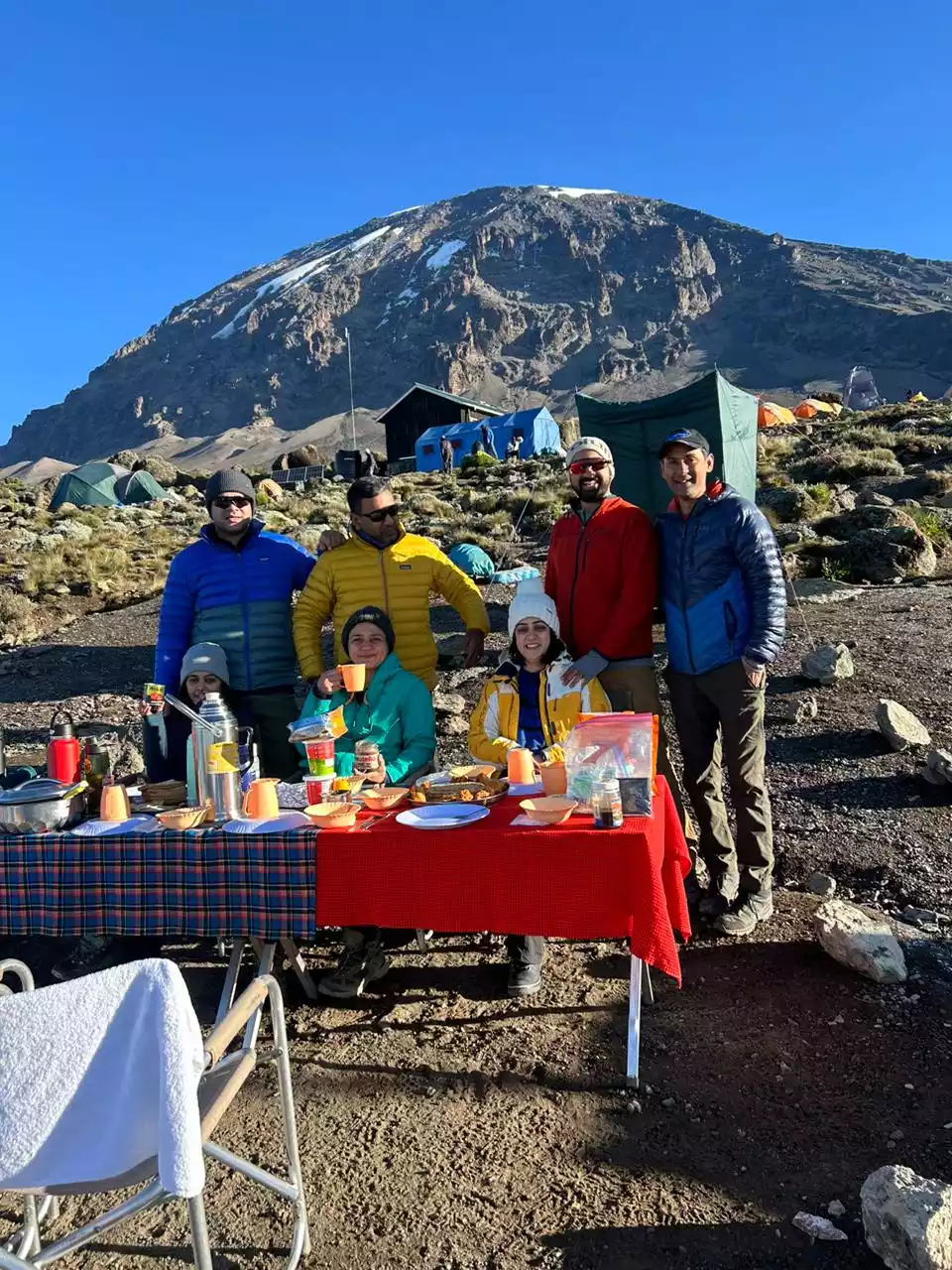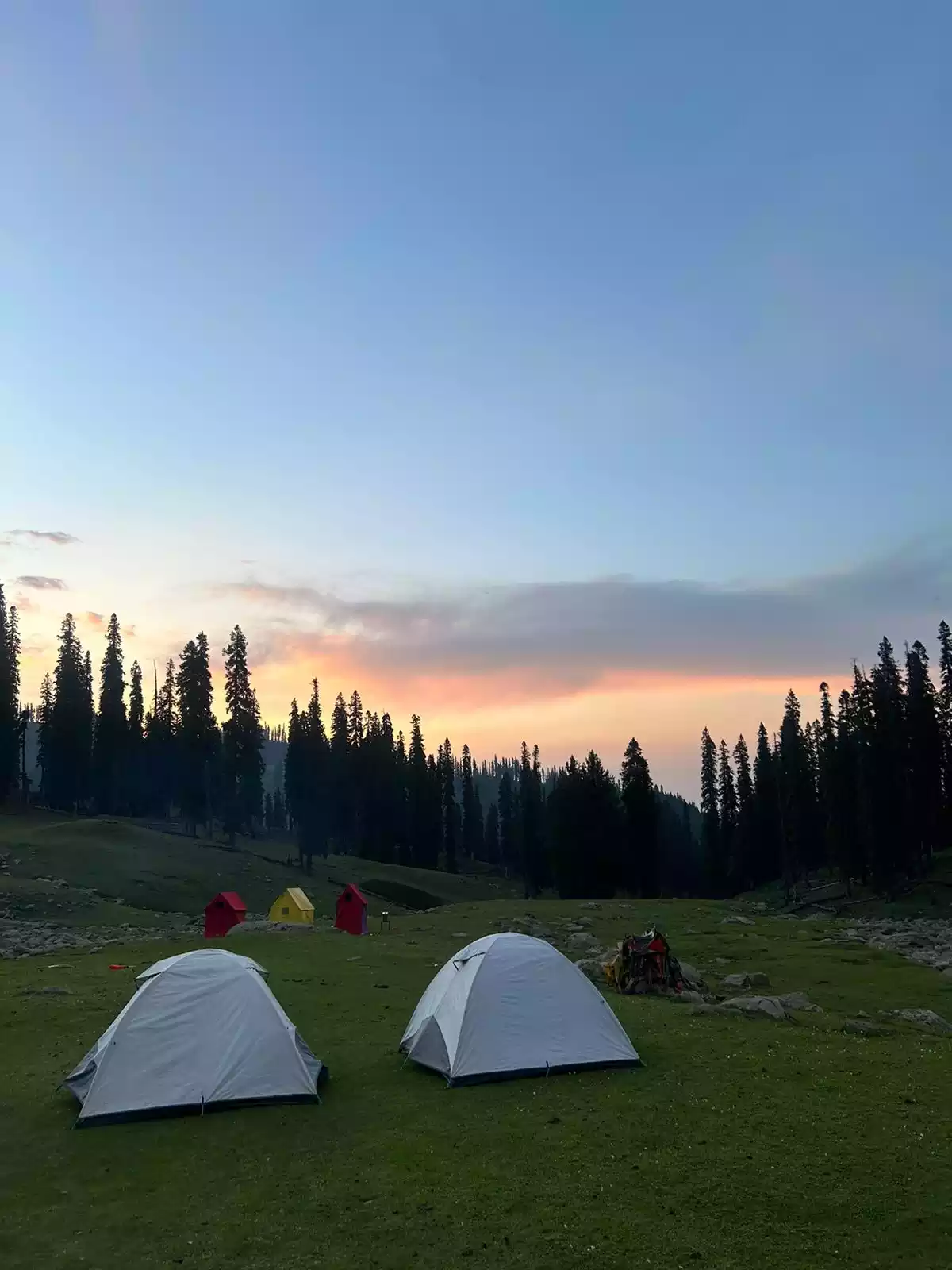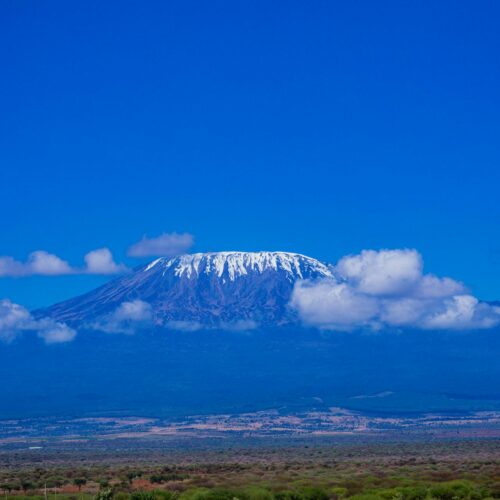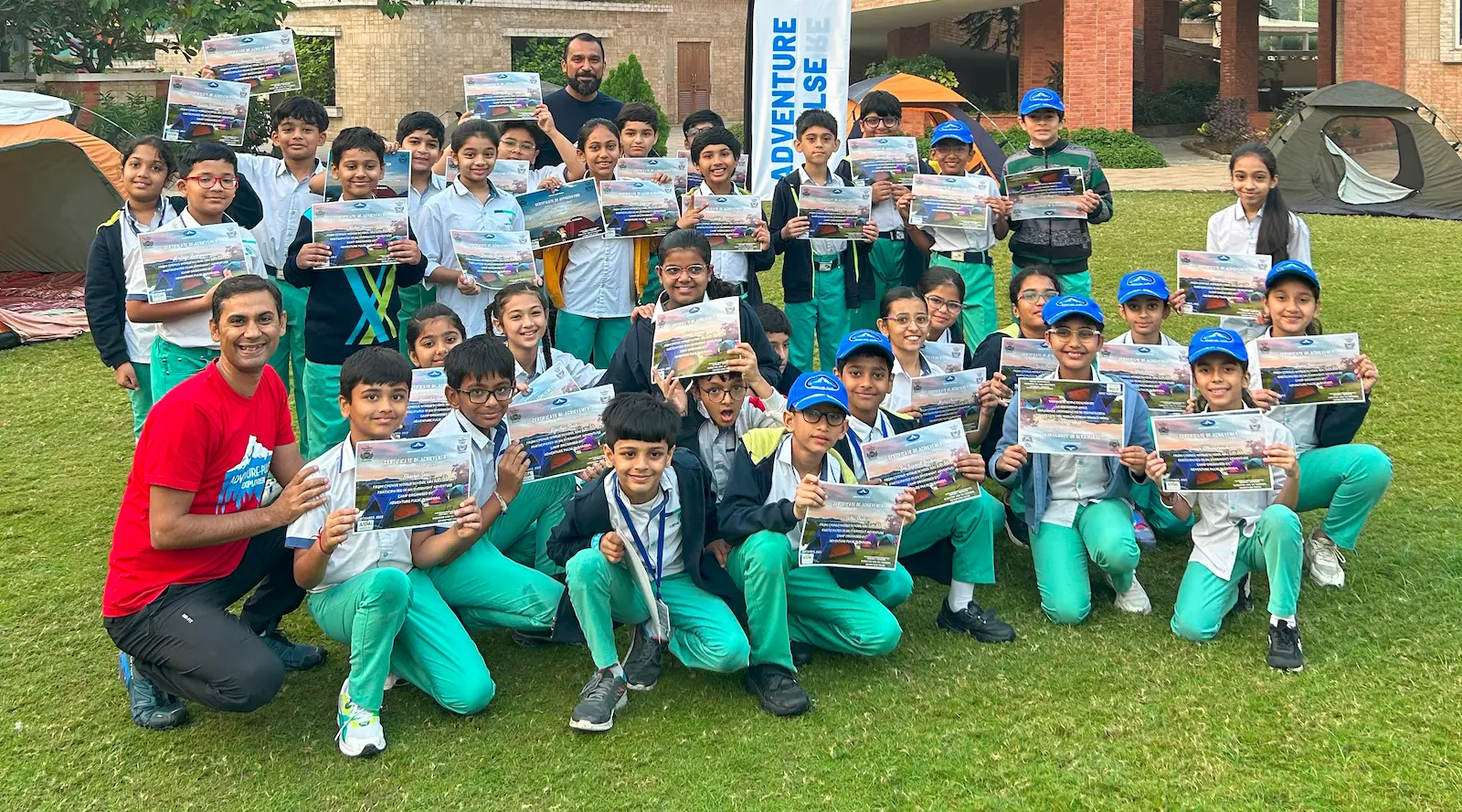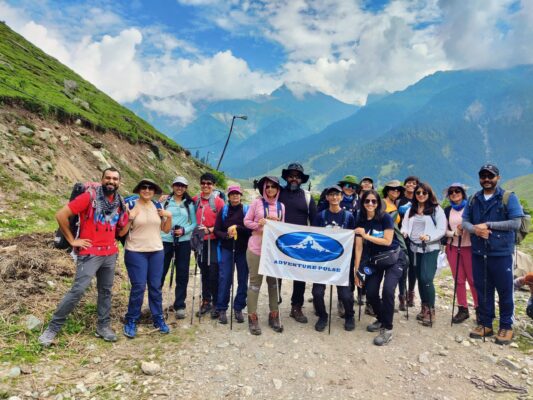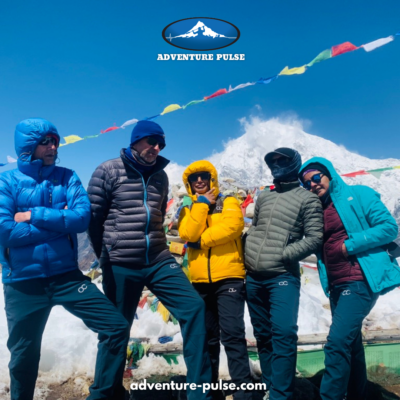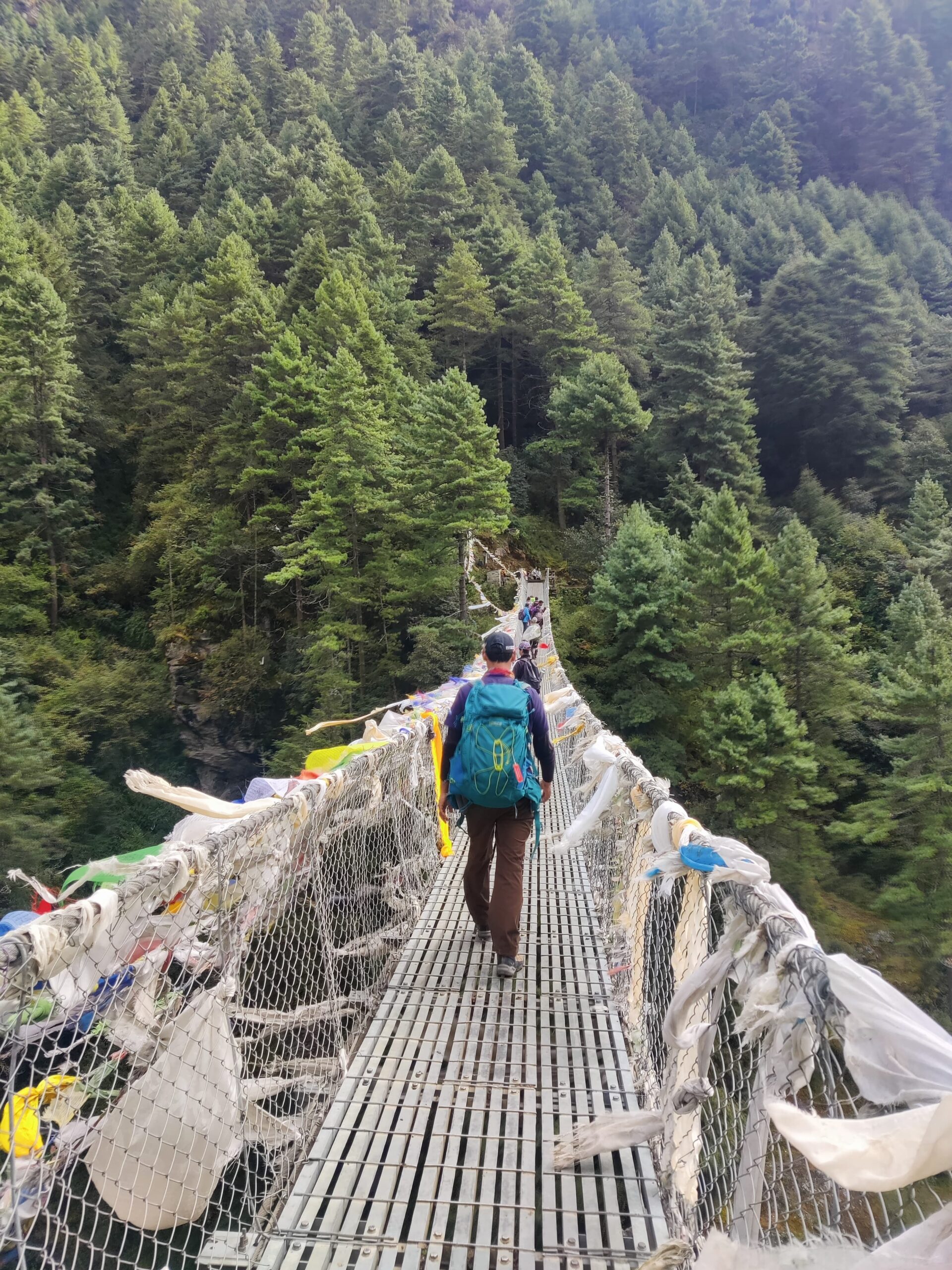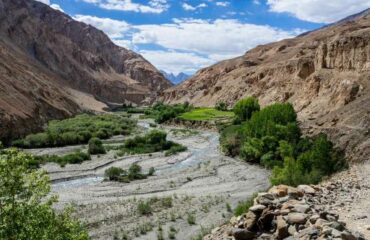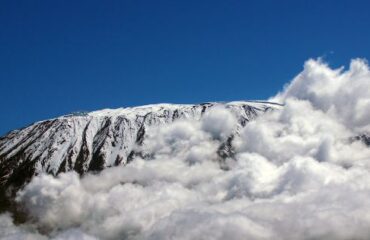
A classic Himalayan trek, Goecha La is undoubtedly one of the most popular and scenic trekking routes in India. The quaint hamlet of Yuksom, colourful Rhododendron forests of Tshoka, endless meadows of Thansing, picturesque Samiti lake and stunning vistas of Himalayan giants including Mt. Kangchenjunga from Dzongri La and Goecha La, all make it a once in a lifetime experience for trekkers.
This 09-day trek is considered a moderate to difficult grade trek and is recommended for experienced trekkers and fit beginners. The trek is challenging mainly due to the day wise altitude gain. However, with prior preparation and proper attention to the acclimatization process, anyone with average fitness can do the trek. The trek begins from Yuksom in West Sikkim district, which was also the first capital of Sikkim. Bagdogra airport is the nearest airport and New Jalpaiguri the nearest Railway Station. From the airport or railway station, Yuksom is a 5-6 hrs drive through mountains roads.
What to expect on the Goecha La Trek?
The Goecha La Trek is a long trek and involves 09 days of trekking. Over this period, you will be gaining an altitude of almost 10,000 ft. On the trek you will be crossing several suspension bridges, thick rhododendron forests, alpine meadows and lakes and some rocky terrain to finally reach the Goecha La Viewpoint 1 which is the farthest one can trek.
For the initial stretch; from Yuksom to Sachen and Sachen to Tshoka, the walk is mostly through a forest, so expect it to be humid. You will cross a total of 4 river bridges before you reach Tshoka, The constant descent whenever there is a bridge and then climb after each bridge makes it a tough day of trekking. The altitude gain is gradual.
Tshoka to Dozngri is a challenging hike as the altitude gain is almost 1000 ft. Expect Dzongri to be very cold and windy and depending on the weather conditions you might experience snowfall. From Dzongri to Thansing and further towards Lamuney it is a comfortable hike through vast meadows. The last section from Lamuney to Goecha La pass is probably the toughest part as you will be trekking in the night at an average elevation of over 3000 metres.
On an average you will be walking 7-8 hours a day. It is recommended to walk at your own pace and keep yourself hydrated all the time.
Where will I be staying?
Once you arrive at Bagdogra Airport, you will be driven to Yuksom which is the start point of the Goecha La Trek. In Yuksom, your stay will be at a local family-owned guesthouse in the Main Bazaar area. While on the trek, you will be staying in comfortable tents on a double sharing basis. We at Adventure Pulse provide a 3-man tent for 2 people to make sure you have comfort and sufficient place to rest and keep your belongings. We can also arrange a single tent at an additional cost. For the people who are camping for the first time, staying in a tent might seem uncomfortable at first, but it will get better and by the end of the trek you will surely miss the experience!
The wind and waterproof tents will keep you warm and protect you from the rain and snow. We provide a thick foam mattress and good quality sleeping bags to make your tent stay as comfortable as we can. One can also carry their own sleeping bags with a liner.
The Goecha La trek also has a trekkers’ hut at all the campsites except at Lamuney. These trekkers huts are very basic wooden hut with a large hall (A common area/dining hall), a couple of small rooms where trekkers can sleep. Because of the hygiene and comfort factors, we recommend all our trekkers to stay in the tents provided by us. However, depending on the preference, we can arrange your stay in the hut and you can pay the hut owners directly.
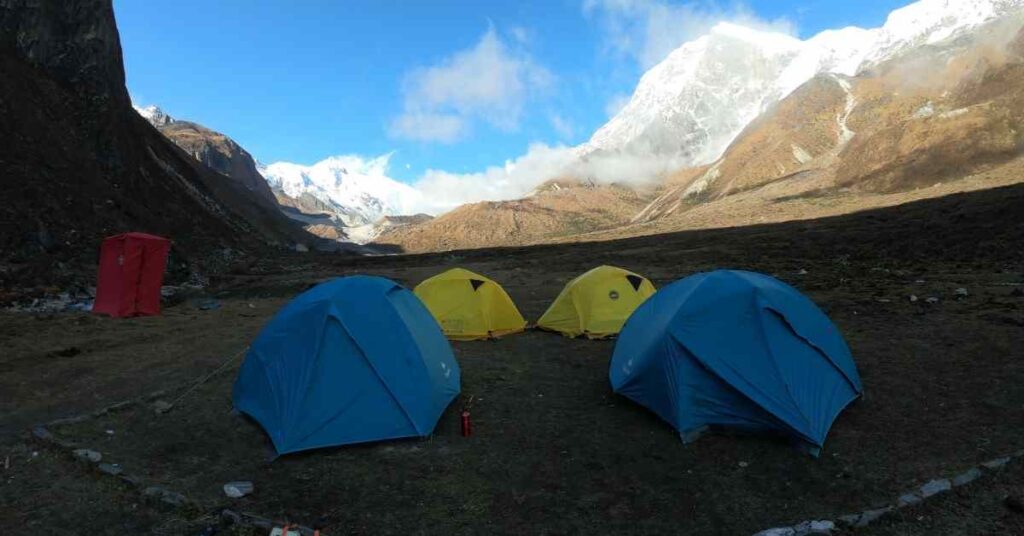
How would the weather be like on the Goecha La Trek?
March to May and September to Early November are the recommended seasons to go for the Goecha La Trek.
March to May is perfect as it is the blooming season of Rhododendrons and you will be trekking through colourful forests. The day time weather is usually pleasant with bright summer skies. Nighttime temperatures are colder. There is always a chance of rain and snowfall as you move higher up.
September to November is also a good time. As it is the post-monsoon season, there is less probability of rains. This is the perfect season as you can get clear views of mountain peaks all around.
The average temperature can range from 10-15 degrees in the day to 0-5 degrees at night.
Where will the meals be served?
As mentioned earlier, the Goecha La trek has a trekkers’ hut at every campsite. The meals will be served inside the Dining Area of the trekkers’ hut where we will be providing a dining table and dining stools. The dining area inside the huts are spacious and acts as a central ‘hangout area’ where trekkers can sit, relax, have tea/coffee, meals, meet and interact with the group.
Where will we go to the loo?
As part of our services, we provide a toilet tent with a flushable loo. After the porters reach the next campsite, they will set up the loo on one end of the campsite, away from running water. The toilet tents will then be pitched, and the portable flushable commode will be placed. At the start of the trek, your trek leader will explain how the loo works. Each Toilet Tent will also come equipped with sanitizing sprays, toilet paper and a packet for the waste. While on the trail, you will have to go Au Natural behind a rock.
On Goecha La trek, some of the campsites and trekkers huts also have proper wet toilets which are available to use for everyone.
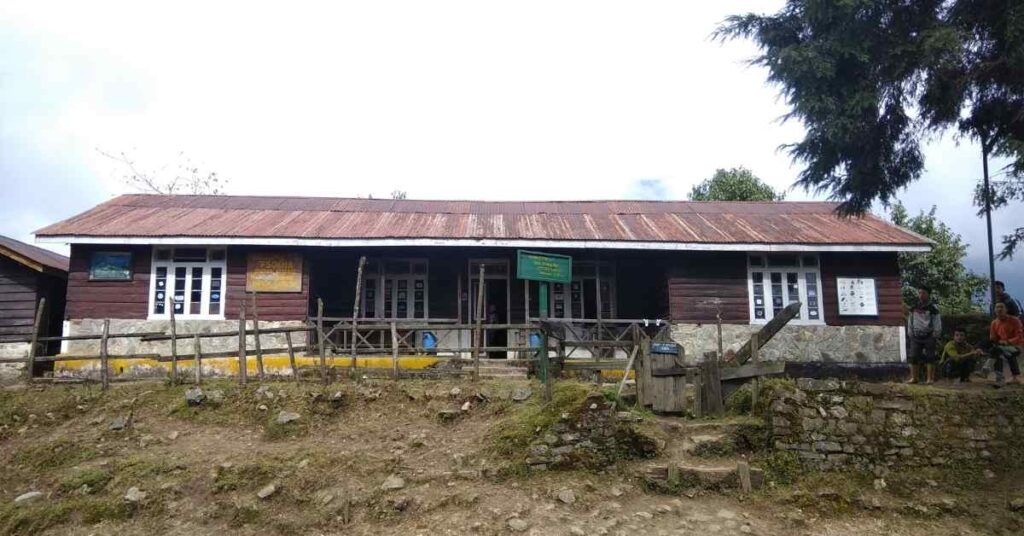
What will I be carrying while on the trek?
Please follow the link to download a detailed list of things to carry for the Goecha La trek. List of things to carry.
While trekking, your personal bags with most of your luggage will be loaded on the mules/yaks in the morning. You will be able to access this bag only once we reach the next campsite. Most of the clothes and stuff that you don’t need while trekking should be packed into this main bag. A good duffel bag (80-100 litres) or a rucksack (50-70 litres) can be used as your ‘main’ bag. If you have some clothes or miscellaneous items that you do not wish to take on the trek, they can be left at the guesthouse in Yuksom and we’ll ensure you get them at the end of the trek.
On your back, you’ll have to carry a small daypack (15-20 litres) with a light jacket, windcheater/raincoat, water bottle and your packed lunch. You will need to carry your daypack and we would recommend keeping it as light as possible.
What kind of food will be provided on the trek?
Adventure Pulse team will have Kitchen staff who will be carrying all the ration that is required for the duration of the trek and set up a separate kitchen tent at all the campsite.
Your morning will start with a hot coffee or tea with some biscuits. It is important to stay hydrated in the mountains and the best way to consume liquids is in the form of hot beverages. We serve tea/coffee in morning, during breakfast, lunch and evening snack.
For Breakfast, you can expect omelettes, parathas, bread and jam, pancakes, poha, oats and noodles. We will try our best to provide an assortment of food and avoid repetition. Lunch will be provided in the form of packed meals. At the start of the day, your trek leader will prepare your tiffin box with the meal prepared (fried rice, veg rolls, puri sabji), juices, biscuits, chocolates and toffees. Sugar provides some much-needed energy while you are trekking.
The Dinner Menu will include items such as fried rice, Hakka noodles, biryani, Dal-Roti-Sabji-Rice among others followed by some desserts. We will also provide soup and dessert before each supper.
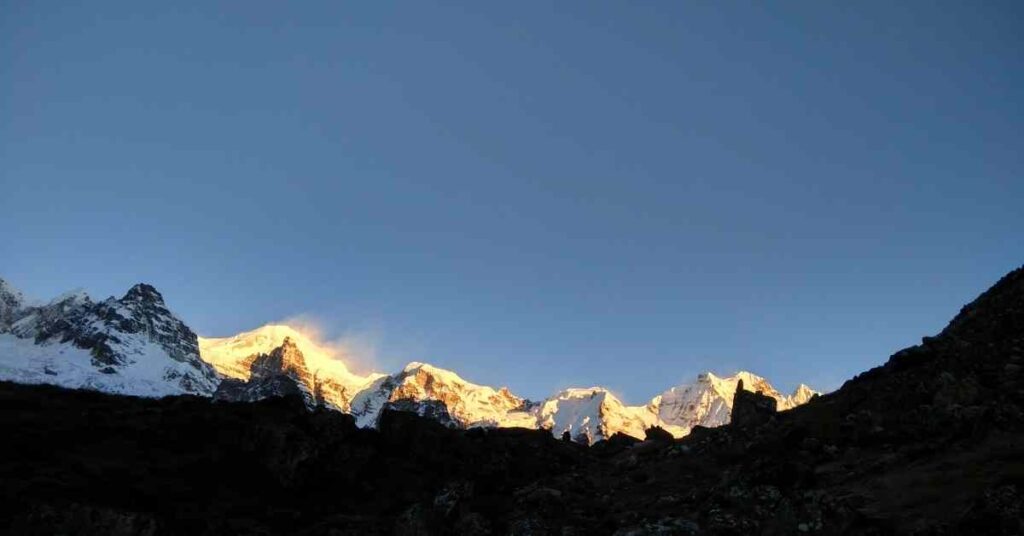
What is the strength of the support staff on the Goecha La Trek?
Each group will have a lead guide and numerous assistant guides (depending on the strength of the group). The guide’s responsibility is to keep you safe. They will make sure that the group is following the right route and at the right pace. They will also be your Single Point of Contact with the staff. The guide will be from the area and will also have access to the necessary paperwork. In the case of an emergency, they will also organize the necessary evacuations.
The assistant guide will assist the guide and will either walk behind the group and/or in the centre. They will make sure that no person will be trekking alone and that the group does not spread out too thin. If you wish, we can also hire a dedicated assistant guide who will walk with you the entire time. They will make sure that you follow the right pace and will be able to check on you on a more personal basis.
Along with the guides, you will also be accompanied by a Cook, who will cook all the meals. If it’s a large group, there will also be a kitchen helper.
To round off the staff are the mule handlers. It is their job to load your main bags on to the mules or ponies and get them to the destination.
How do I get to Yuksom?
Bagdogra is the nearest airport to Yuksom. The easiest way to get to Bagdogra is to fly. We would recommend getting into Bagdogra in the morning (any time before 1:00 pm). Our representative will meet you at the airport and drive you to Yuksom which is around a 5-6 hours drive. One can also get a train to New Jalpaiguri Railway Station.
How do Prepare for the trek?
Goecha La is a moderate high-altitude trek with a total altitude gain of over 10,000 ft in a period of 9 days. The trek requires good endurance and a certain level of fitness. For a sample fitness plan, you can refer to our plan here. If you are a fit individual, dedicated training for a month should be more than enough. Goecha La Trek is a long trek, but fit beginners can easily join us. You can contact us at [email protected] and we’ll be happy to help you draft a fitness plan for your needs. A large portion of trekking is the mental fortitude and your ability to push yourself regardless of your physical fitness.
Feel free to leave a comment with any question you may have about the Goecha La Trek.

